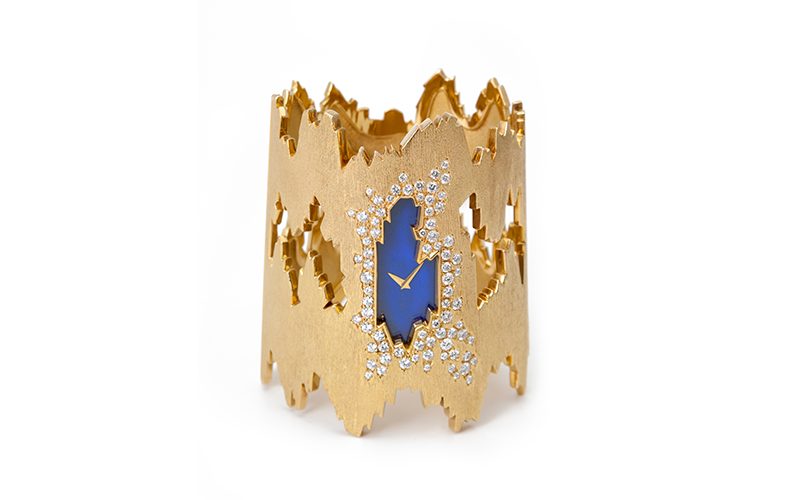- Events & Programs Home
- Calendar
- Accessibility
- Adults
-
Families & Teens
- Families & Teens Home
- 10x10 Teen Art Expo
- Art on the Rise
- Art Together: Art Making for Families with Children Ages 3–5
- Babies Sing with May Festival Minis
- Boy Scouts / Girl Scouts
- CAM Kids Day
- Family Storytime and Gallery Walk
- Family Studio: Art Making for Families with Children Ages 6–12
- Games in the Galleries
- Members-Only Baby Tours
- Public Baby Tours
- REC Reads
- Rosenthal Education Center (REC)
- Saturday Morning Art Class
- See Play Learn Kits
- Summer Camp
- Teen Fest: Zine and Comic Exchange
- RECreate
- Teachers
- Community Outreach
- Fundraisers
- Plan Your Own Event

- Events & Programs Home
- Calendar
- Accessibility
- Adults
-
Families & Teens
- Families & Teens Home
- 10x10 Teen Art Expo
- Art on the Rise
- Art Together: Art Making for Families with Children Ages 3–5
- Babies Sing with May Festival Minis
- Boy Scouts / Girl Scouts
- CAM Kids Day
- Family Storytime and Gallery Walk
- Family Studio: Art Making for Families with Children Ages 6–12
- Games in the Galleries
- Members-Only Baby Tours
- Public Baby Tours
- REC Reads
- Rosenthal Education Center (REC)
- Saturday Morning Art Class
- See Play Learn Kits
- Summer Camp
- Teen Fest: Zine and Comic Exchange
- RECreate
- Teachers
- Community Outreach
- Fundraisers
- Plan Your Own Event
Alexandra Watch by Chopard
Alexandra Watch by Chopard
- Home
- Plan Your Visit
- Art
-
Events & Programs
- Events & Programs Home
- Calendar
- Accessibility
- Adults
-
Families & Teens
- Families & Teens Home
- 10x10 Teen Art Expo
- Art on the Rise
- Art Together: Art Making for Families with Children Ages 3–5
- Babies Sing with May Festival Minis
- Boy Scouts / Girl Scouts
- CAM Kids Day
- Family Storytime and Gallery Walk
- Family Studio: Art Making for Families with Children Ages 6–12
- Games in the Galleries
- Members-Only Baby Tours
- Public Baby Tours
- REC Reads
- Rosenthal Education Center (REC)
- Saturday Morning Art Class
- See Play Learn Kits
- Summer Camp
- Teen Fest: Zine and Comic Exchange
- RECreate
- Teachers
- Community Outreach
- Fundraisers
- Plan Your Own Event
- Give & Join
- About
- Tickets
- Calendar
- Exhibitions
- Collections
- Blog
- Shop

Chopard (Swiss, est. 1860), Alexandra Watch, circa 1971, gold, diamonds, lapis lazuli
Audio Description
This watch was designed and manufactured around 1971 by Swiss watch maker and jewelry house Chopard, which was established in 1860.
This cuff-style watch is made of yellow gold and has a striated surface, which makes it appear matte. The edges are cut geometrically and uneven and there are voids all around the wide band. The face is dark blue lapis lazuli with no numbers and gold hands. It is surrounded by recessed, small, faceted diamonds in a random pattern.
Label Copy
This watch was designed and manufactured around 1971 by Swiss watch maker and jewelry house Chopard, which was established in 1860.
A global watch manufacturer, Chopard has long been patronized by the world’s elite. However, in 1963 the firm was sold, and the new owners wasted no time updating their products. They invigorated Chopard, creating original and rather playful designs. They aimed to reestablish a modernized company, while retaining its unequaled quality.
In response to the influence of non-Western and indigenous cultural aesthetics in the period, Chopard adopted the cuff bracelet as a design for their watches. Following avant-garde trends, this example incorporates a rough, striated exterior surface with jagged edges and openings that encircle the wrist. The inclusion of small diamonds clustered around the lapis lazuli face connotes elegance, but these brilliants are downplayed by being recessed. The face of this watch has no numerals, reinforcing the fact that it is a piece of jewelry rather than a timepiece. It is the design, not the time, that is important.
Cincinnati, OH 45202
Toll Free: 1 (877) 472-4226
Museum Hours
Museum Shop
Terrace Café
Library
Cincinnati Art Museum is supported by the tens of thousands of people who give generously to the annual ArtsWave Campaign, the region's primary source for arts funding.

Free general admission to the Cincinnati Art Museum is made possible by a gift from the Rosenthal Family Foundation. Exhibition pricing may vary. Parking at the Cincinnati Art Museum is free.
Generous support for our extended Thursday hours is provided by Art Bridges Foundation’s Access for All program.

General operating support provided by:



